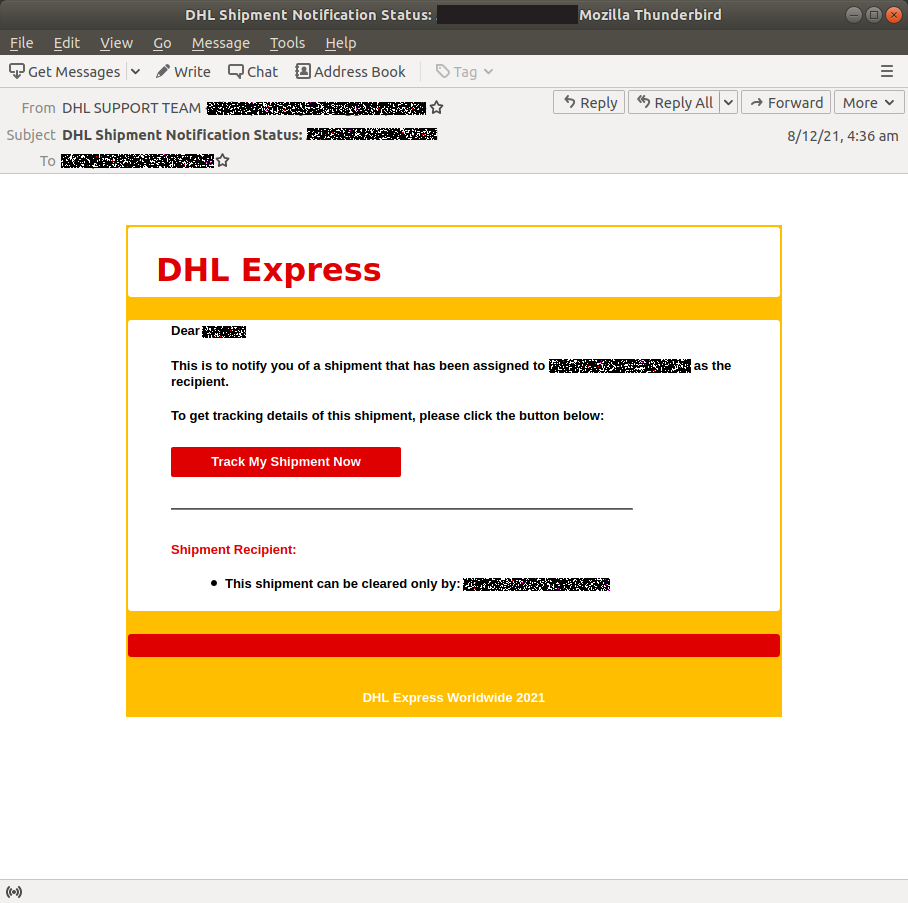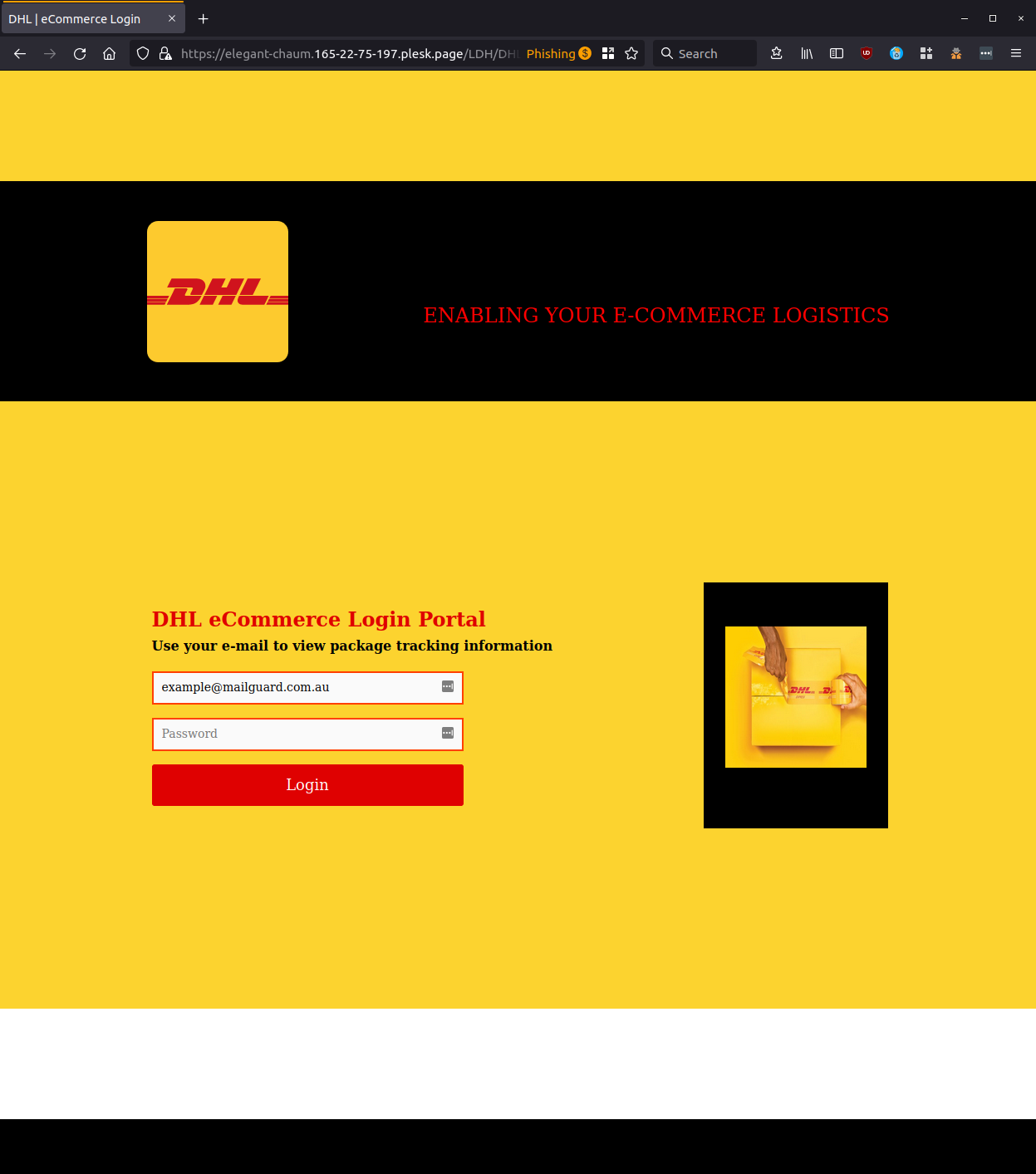Parcel delivery scams are surging, with the latest phishing email being blocked by MailGuard impersonating leading international delivery service, DHL Express. Once again, cybercriminals are targeting the vulnerability of those urgently awaiting packages, particularly from overseas. There has been a rapid rise in parcel delivery scams in recent weeks, mimicking logistics providers such as DHL and Australia Post, with scammers no doubt making the most of the festive season to lure in unsuspecting victims.
With the subject heading, ‘DHL Shipment Notification Status: [###]’ the email purports to notify the recipient that a shipment has been assigned to the recipient and has been sent from the ‘DHL SUPPORT TEAM’. However, on close inspection, the address from which the email has been sent is a compromised business account, and it is certainly not a legitimate DHL Express communication. Scammers use basic HTML email formatting to copy the colours of the brand, leaving out any detailed branding aspects of DHL Express.
Here’s what the email looks like:

Recipients are asked to click on the red ‘Track My Shipment Now’ button to get details of the delivery and are advised that only the recipient of the email, i.e., who the email is addressed to, can clear the shipment. Clicking on the link leads the victim to the phishing page below:

The phishing page incorporates more brand assets, such as the DHL Express logo, colours, and imagery to lure victims into entering their email and password details for scammers to harvest. Once a password is entered, the site does not progress any further. It’s important to note that DHL uses the following footer in their website pages: “© DHL International GmbH. All rights reserved”, to help differentiate from fake websites such as this example, where these details have been excluded.
DHL offers the following advice, which can be found on their website as to whether you have received a fraudulent email:
- “Official DHL communication is always sent from @dhl.com, @dpdhl.com, @dhl.de, @dhl.fr or another country domain after @dhl.
- We never use @gmail, @yahoo, or other free email services to send emails.
- We never link to a website other than our own starting with for example https://dhl.com/, https://dpdhl.com/, or a country/campaign website
From a desktop computer:
- Drag & Drop the suspicious email into a new message and send it to phishing-dpdhl@dhl.com as an attachment. To effectively shut down the fraudulent service, we need complete mail headers which are not included in a forwarded message.
From a mobile device:
- Forward the message to us. If feasible, please always send the suspected email from a desktop as an attachment including complete mail headers.
- Report the message as spam within your mail app, so that your mail provider can take appropriate actions
Please report all suspicious activity to our dedicated Anti-Abuse Mailbox at phishing-dpdhl@dhl.comfollowing the below instructions”.
Further information can be found on the DHL website: https://www.dhl.com/au-en/home/footer/fraud-awareness.html.
MailGuard urges all recipients of this email to delete it immediately without clicking on any links. Providing your personal details can result in your sensitive information being used for criminal activity.
MailGuard urges users not to click links or open attachments within emails that:
- Are not addressed to you by name.
- Appear to be from a legitimate company but use poor English or omits personal details that a legitimate sender would include.
- Are from businesses that you were not expecting to hear from, and/or
- Take you to a landing page or website that is not the legitimate URL of the company the email is purporting to be sent from.
One email is all that it takes
All that it takes to devastate your business is a cleverly worded email message that can steal sensitive user credentials or disrupt your business operations. If scammers can trick one person in your company into clicking on a malicious link or attachment, they can gain access to your data or inflict damage on your business.
For a few dollars per staff member per month, you can protect your business with MailGuard's predictive and advanced email security. Talk to a solution consultant at MailGuard today about securing your company's inboxes.
Stay up-to-date with MailGuard's latest blog posts by subscribing to free updates. Subscribe to weekly updates by clicking on the button below.







